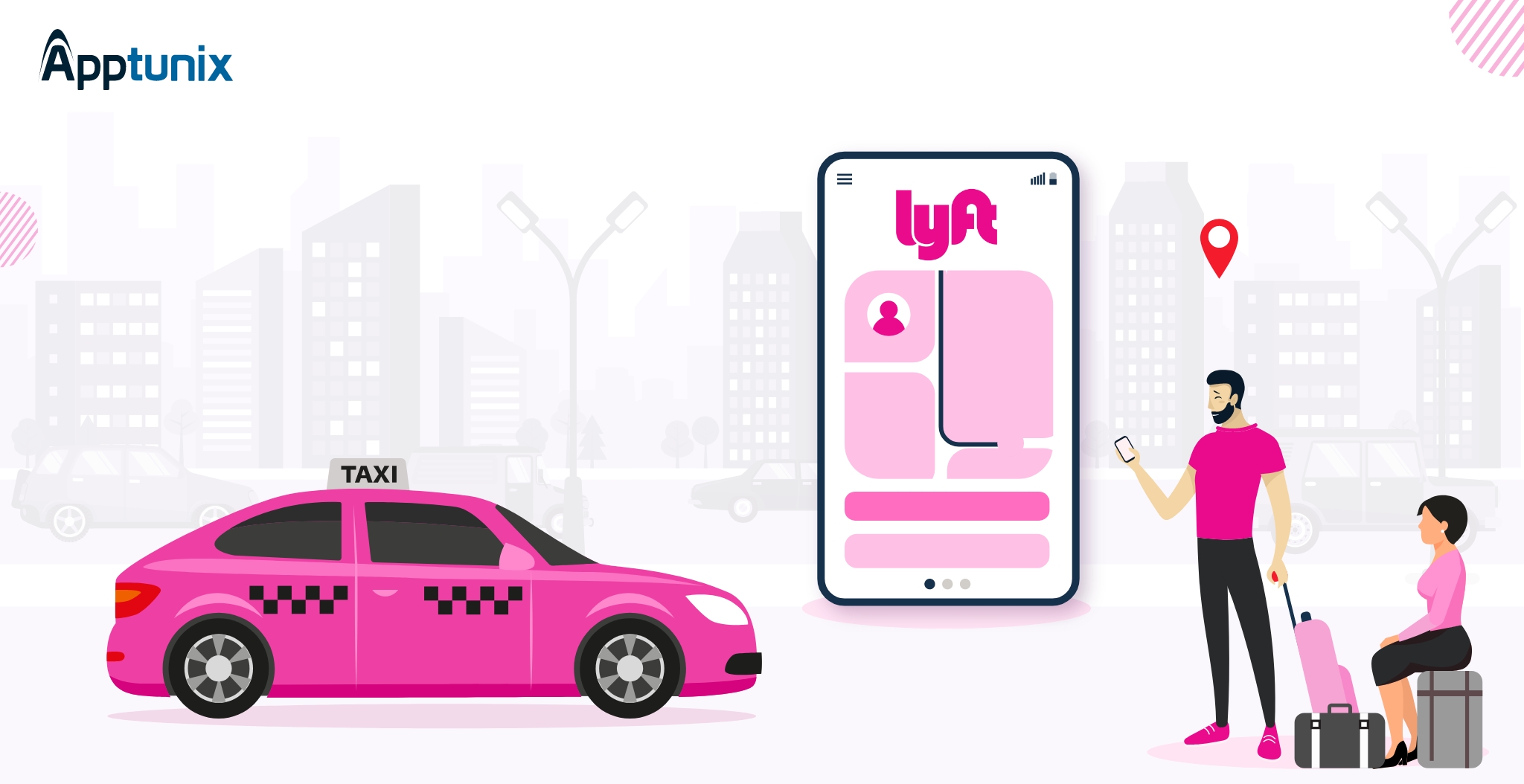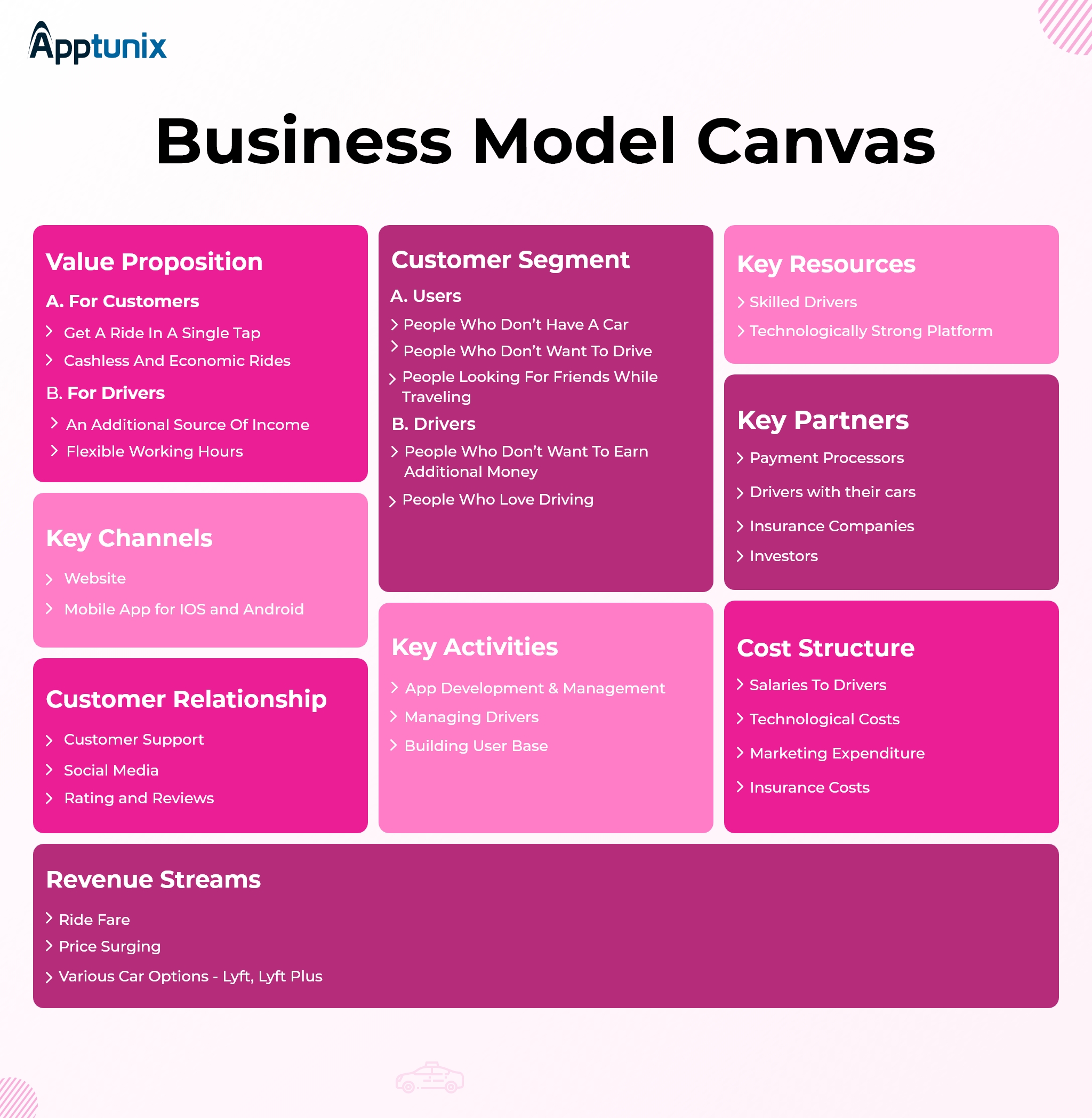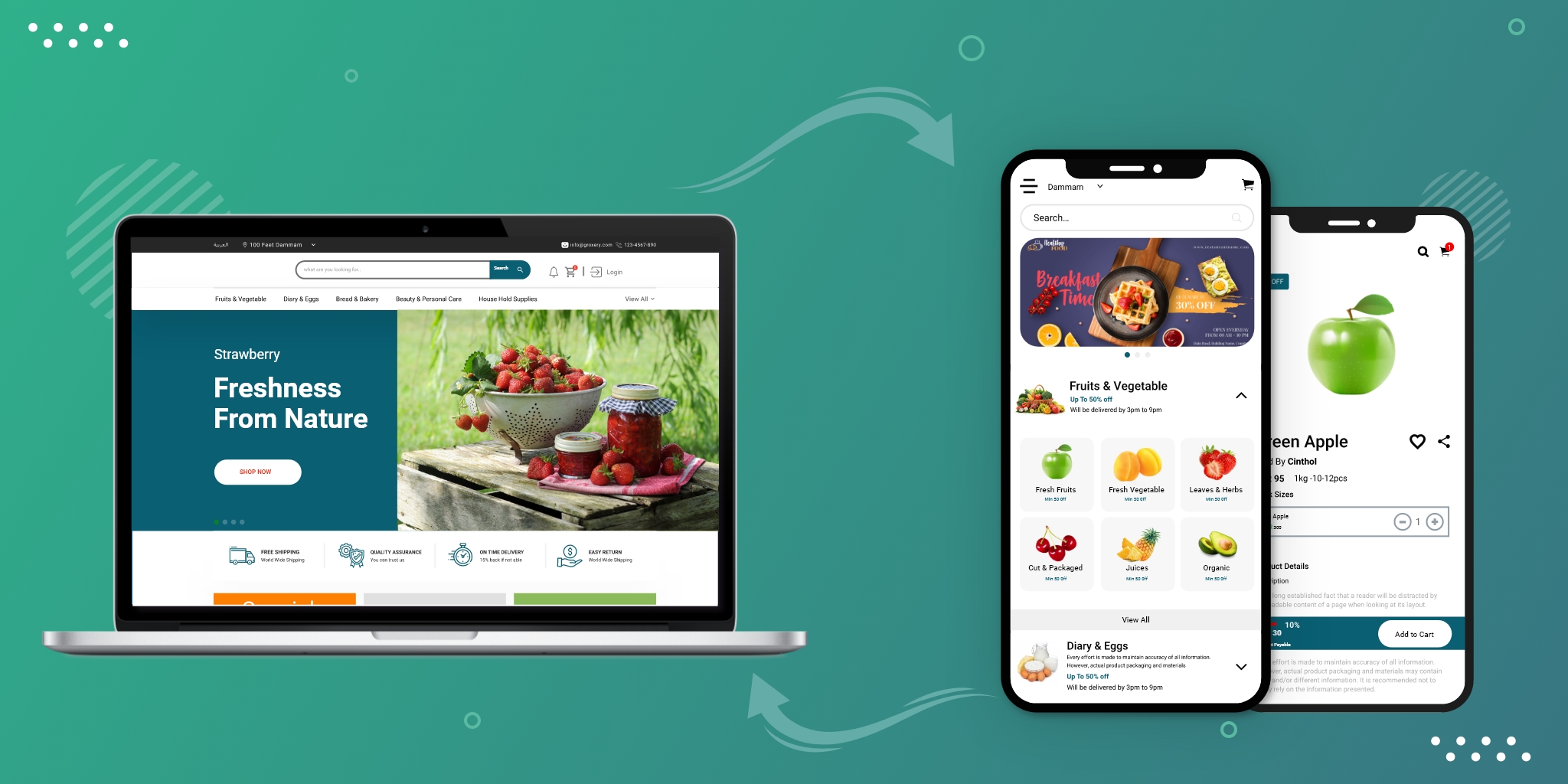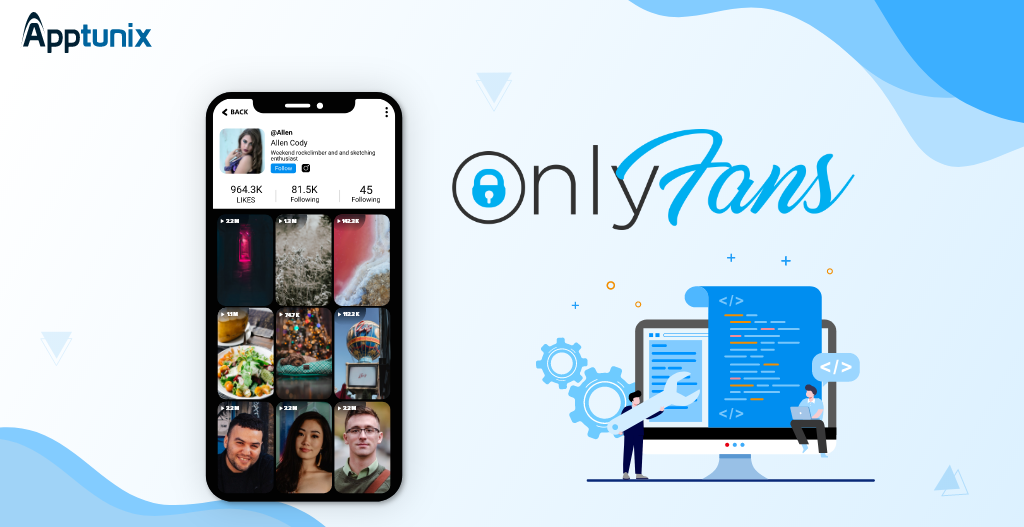Don't miss the chance to work with top 1% of developers.
Sign Up Now and Get FREE CTO-level Consultation.
Confused about your business model?
Request a FREE Business Plan.
How Do Apps like Lyft Work | Business Model and Relevant Features
Table of contents

With over 21 million active users in 2020, Lyft is one of the most popular ride-sharing applications. It has grown steadily since its debut in 2012, and it currently ranks among the top companies with a 35 percent market share.
It is the most popular app among commuters in cities throughout the United States and Canada because of its low rates and interactive features.
Apps like Lyft are on-demand transportation platform that allows users to hail a cab with only a few clicks on their smartphones. Apps like Lyft maintains an excellent business model to ensure that end-users have a flawless experience when using their requested service. Lyft is seen as an alternative to Uber in recent years.
With a market capitalization of $7.5 billion following a $500 million funding round, is unquestionably giving Uber a run for its money. In the coming years, this industry is expected to become royalty in the on-demand ride-hailing business.
History Of Lyft - Ride Sharing App
According to Wikipedia, John Zimmer, Matt Vat Horn, Logan Green, and Marcus Cohn started Lyft in 2012. Earlier Lyft was known as Zimride in 2007 but subsequently changed its name to Lyft in 2012. The headquarters of the company is in San Francisco, California, USA. Lyft had conducted 7 million trips as of October 2015, and there were 1,00,000 registered drivers as of March 2015. In its most recent fundraising round, it was valued at $15.1 billion. The company typically earns 20% net income every ride, with the majority of the money going to the driver.
People would contact Lyft drivers to utilize their vehicles to transport them to their location, and when the ride was completed, riders would be paid for their travel. The individual conducting the driving would receive 80% of the fare, with the remaining 20% going to Lyft.
Logan and Zimmer first introduced Lyft as a Zimride auxiliary, without giving it a distinct character. When they noticed the growing popularity of ride-sharing, they eliminated Zimride and marketed Lyft as their main service in 2012.
Statistics Of Lyft App
Lyft grew fast in the United States, from 60 locations in 2001 to 300 in 2017, but Uber’s rise was otherworldly, with the company setting up shop in virtually every nation that would let it. As a result, Lyft has been overshadowed by Uber and is mostly unknown outside of the United States.
Lyft did not begin to cut into Uber’s market share in the United States until the Cancel Uber campaign. From 2017 to 2018, Lyft increased its market share from 22 to 33 percent in the United States, however, this has slowed to 29 percent in 2020.
As Uber was criticized for its employment model, Lyft began a series of campaigns aimed at portraying its service more positively.
Lyft, like Uber, had a self-driving division and envisioned a future in which a human driver was no longer required. However, due to the exorbitant expenses of creating and testing self-driving vehicles, it sold its business to Toyota in April 2021 for $550 million.
On Lyft, we’ve gathered data and statistics,
- Lyft’s revenue in 2020 was $2.3 billion, a 36% drop from the previous year.
- In 2020, Lyft’s average revenue per rider climbed to $45.40.
- Lyft was used by 12.5 million people in the fourth quarter of 2020. This is a 45 percent decrease from the fourth quarter of 2019.
Working Process Of Apps Like Lyft
Apps like Lyft are a ride-hailing platform that connects riders and drivers. Users can use their smartphones to find a local cab and book a trip to get from one point to another. When a user books a cab, the Lyft driver, on the other hand, receives a notice. The local neighborhood drivers might accept or refuse the transport based on convenience and availability.
Lyft riders may choose from a variety of modes, and hire a highly qualified driver. This aggregator approach allows the passenger to follow, rate, and pay the driver directly from the app, eliminating the need for cash.
- Apps like Lyft connects passengers in need of a ride with the nearest drivers.
- Find New Friends every day is their motto, and they do it in a pleasant tone.
- When a user requests a ride, he is given the driver’s information as well as an estimated arrival time.
- The driver can utilize live tracking to determine the exact position of the person who requested the service.
- The payments for the rides are handled by Lyft directly from within the app.
- Each ride earns Lyft a commission, with the remainder of the fare going to the driver.
- Apps like Lyft also have a rating and review system in place for both drivers and users to assess one other’s experiences.
- Surge pricing is also used by the firm to increase revenue.
Working Process Of Apps Like Lyft For Riders
Requesting a ride is the first step in the Lyft Business Model. Any passenger with a mobile phone and an app installed on that phone may request a ride instantaneously by following a few simple steps. Users can select between three options: Lyft, Lyft Plus, and Lyft Line.
The card-based interface allows the client to follow the automobile as it arrives and provides an ETA. After the ride, customers can provide comments to the driver. The feedback mechanism is an important component of the Lyft Business Model.
Once the trip has been collected, the user and the other passenger can share the cost of the trip. To do this, the user simply opens the Lyft app and navigates to the map with the driving details.
A user can select a person from the list by tapping the Share button, scrolling through the contacts, and selecting the person from the list. In addition to the price of the trip, the user bears the cost of the remaining tip. A user can select up to five additional passengers to share the tip.
Working Process Of Apps Like Lyft For Drivers
When a passenger makes a request, a driver that would be near the vicinity will be notified, and the driver will have the choice to accept or refuse your ride. Drivers can trace the passenger’s position and the origin of the request.
If the driver accepts the trip, he or she can use the position tracker to locate the rider and complete the task. The rider can be rated by the driver. There is also a rating system in place for drivers.
Apps like Lyft provides a new source of revenue to the driver’s resume. It enables a driver to work on a more flexible schedule.
Drivers are free to work whenever and for as long as they choose. It can assist individuals who like driving in following their passion while also allowing them to accomplish other things with their free time.

Must Features For Apps Like Lyft
- Apps like Lyft quickly connect consumers with accessible cab drivers in their immediate vicinity.
- Users may order a trip and receive the driver’s details as well as the expected arrival time with a single swipe on their smartphone (ETA).
- The user may follow the driver’s whereabouts in real-time.
- Apps like Lyft have a payment gateway module.
- Apps like Lyft takes a 20% fee from each ride, with the remaining 80% going to the driver.
- Customers and drivers may both rate and evaluate each other via the Lyft app.
- Lyft offers a variety of cab services, including Lyft Mini, Lyft Line, and Lyft Plus.
- Heat maps are also used by Lyft to accommodate the surge pricing idea.
The way we commute has changed as a result of technological advancements. One of the most popular company concepts is to provide transportation at the convenience of the customer.
And there are lots of choices for a user who wants to try things out on his own in a quick, cost-effective, efficient, and comfortable manner.
Lyft is one such alternative. But what are the crucial components that go into creating App like Lyft? Take a look at the important features for apps like Lyft:
Features of the Customer App
Search and schedule a ride: The rider must be able to search for and enter the pick-up and drop-off locations. It should be centered on delivering fast results while also offering a pleasant user experience.
Real-time alerts: The riders must receive updates via notifications regarding small details such as how far the driver has traveled when he will arrive at the pick-up location, and so on.
Projected arrival time and fare information: The rider should be aware of the estimated arrival time based on the pick-up and drop-off locations, as well as the fare details for the trip based on the distance traveled. It makes the system more transparent.
GPS and position determination: As part of the service, real-time location tracking should be available. It eliminates any possibility of uncertainty in the mind of the rider, especially when more than one person is taking the ride, i.e. when the driver stops to pick up another rider, the previous rider will know why.
Reviews and ratings: An option for honest reviews and ratings should be included so that the system may be improved.
Features of the Admin App
Dashboard: Information on a rider’s or driver’s total number of rides, payment status for the most recent ride, and so on.
Vehicle management: It entails keeping track of and managing all existing cars.
Managing payment settings: It includes deciding on a payment method and keeping track of a ride’s payment status.
Push notification: To keep users informed about new regulations, coupon codes, ordeals, send them a push notification.
Real-time tracking: For the purpose of safety, keep an eye on the voyage.
Features of the Driver App
Receiving and rejecting rides is a two-step process. Drivers should have the option of accepting or declining a ride. It’s not only about the riders’ comfort; it’s also about the drivers’. A driver may be unable to take a ride for legitimate reasons. In such circumstances, he has the option to cancel it.
Parameters of the journey: The driver must know where he is going, where he will drop off the passenger, and all other details regarding the trip ahead of time.
Guidance systems: Guidance systems should be there for the sake of comfort and a smooth journey that saves time.
Lyft Business Model Canvas
The basic charge, the distance traveled, the per-minute costs, the per-mile cost, the time of day, the trip type, the chosen route, the number of available drivers, current demand for rides, and any local fees or surcharges all go into Lyft business model.
Except for the time necessary to get to the location, everything is estimated and chosen in advance. During traffic, the time may be longer than usual. The motorist might also take a shortcut to get to their destination.
The actual payment amount is calculated by multiplying the journey duration by the cost per mile. The 20% goes to Lyft, while the remaining 80% goes to the Lyft driver. The optional tips offered to Lyft drivers have no bearing on the company’s earnings.

Value proposition:
- For customers
Get a ride in a single tap
Cashless and economic rides
- For Drivers
An additional source of income
Flexible working hours
Customer Relationship:
Customer Support
Social Media
Rating and Reviews
Key Channels:
Website
Mobile App for IOS and Android
Customer Segment:
- Users
People who don’t have a car
People who don’t want to drive
People looking for friends while traveling
- Drivers
People who don’t want to earn additional money
People who love driving
Key Activities:
App Development & Management
Managing Drivers
Building User Base
Key Resources:
Skilled Drivers
Technologically Strong Platform
Key Partners:
Payment Processors
Drivers with their cars
Insurance Companies
Investors
Cost Structure:
Salaries To Drivers
Technological Costs
Marketing Expenditure
Insurance Costs
Revenue Streams:
Ride Fare
Price Surging
Various Car Options – Lyft, Lyft Plus, etc.
Revenue Model of Lyft
You might be wondering how Lyft makes money. Lyft’s riders are, after all, the company’s main source of revenue.
Lyft receives payments from riders for each completed ride, which are referred to as Bookings.
Lyft provides the remaining 20% of the commission to the drivers by slashing its 20% commission on every payment. The city deducts an 8.875 percent sales tax from the 20% fare, while the Black Car Fund deducts a 2.5 percent charge.
When demand is particularly strong in a given region, Lyft may use surge pricing. Lyft motivates drivers by displaying heat maps of the busiest locations and times. As a result, Apps like Lyft will be able to collect more rides and so generate more income.

Furthermore, Lyft has launched the Express Drive service. It links drivers in need of transportation with third-party vehicle rental providers. Apps like Lyft provides a service that facilitates vehicle rental transactions between firms and drivers.
Lyft’s revenue model also includes a recently launched self-driving platform that offers bikes and scooters for last-mile commutes. To increase its income, the business has collaborated with other companies such as Aptive and Waymo to give riders autonomous driving experiences.
Lyft’s major revenue models are as follows:
Car Ride With Lyft
Lyft takes a 20% share of every transaction that takes place on the stage. Ordinary 5-seater vehicles fall under the “Lyft” car category. The remaining 80% of the value paid by the traveler goes to the drivers.
Heat Maps
Lyft features heat maps that define a location when demand is higher, similar to Uber’s surge estimates. In the event of an appeal in a specified region, the taxi company will charge a higher fee. This refers to Lyft’s business strategy. The warmth maps are both spatially and temporally specific.
Lyft Plus
Lyft’s business and revenue strategy include “Lyft Plus,” which are essentially 7-seater cars, to provide customers with an option to the standard 5-seater taxicabs. When compared to standard Lyft, the prices for Lyft Plus are greater. Once again, Lyft takes home a net 20% of each ride.
Lyft Line
Lyft was created from the Zimride ride-sharing software. It was a service provided to those who did not like to engage a private cab to take them to their location. Lyft Line, as the name implies, provided a ride on a predetermined route, similar to other modes of public transportation such as metro or city-run buses, but it was operated by Lyft.
Conclusion
That concludes our discussion on How Does Apps like Lyft Work. Lyft carved out a place for itself in the taxi industry by altering the way people drove and turning ride-sharing into a communal event. Lyft has seen massive growth in the average number of users and related drivers as of 2021, resulting in increased income.
If you’re looking to start a business in taxi-hailing apps like Lyft and Uber, you’re probably well aware that it’s a lucrative and competitive market. To get an advantage over your previously established competition, you must create a comprehensive, entertaining, and simple-to-use platform.
You’ll need experts that know the ins and outs of the sector and can assist you in developing a solution that meets your needs.
We at Apptunix are a group of expert app developers who can assist you in developing apps like Lyft. For additional information, Contact us!

Rate this article!
(2 ratings, average: 5.00 out of 5)
Join 60,000+ Subscribers
Get the weekly updates on the newest brand stories, business models and technology right in your inbox.

You can say, I am an internet surfer. I’m fascinated with marketing and its new trends. With a background in Information Technology, I also like to be aware of the technological advancements around me. Apart from that, you can find me listening to music as I am a huge music lover.

Telemedicine 2.0 - A Comprehensive Guide On What Healthcare Providers Need To Know?
Discover how the latest advancements like Artificial Intelligence in telemedicine are reshaping patient care. This comprehensive resource offers insights into the key trends and innovations driving this shift, providing valuable knowledge for healthcare professionals looking to stay ahead.
Download Now!

















